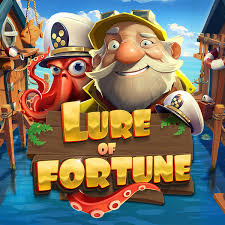The Origins of Playboy: A Vision Realized
The term Playboy Fortune conjures images of lavish lifestyles, extravagant parties, and the glitzy world of the Playboy brand. Founded in 1953 by Hugh Hefner, Playboy quickly grew from a magazine into an international media empire. The Playboy fortune has transcended mere financial wealth; it embodies a cultural phenomenon that transformed notions of sexuality, adulthood, and leisure. This blog post will delve deep into the intricate layers of the Playboy fortune, exploring its origins, key figures, cultural impact, business ventures, and legacy.
The Origins of Playboy: A Vision Realized
The Playboy fortune did not materialize overnight; it stemmed from a revolutionary idea and the sheer determination of its founder HB88.
The Birth of a Brand
Hugh Hefner’s vision was not just to create a magazine but to challenge the conservative norms of the 1950s. He sought to create a publication that celebrated sensuality, freedom, and modern masculinity.
Hefner launched Playboy magazine in December 1953, featuring Marilyn Monroe on its cover. This bold move not only attracted immediate attention but also set a precedent for future issues. The magazine’s unique blend of sophisticated writing, high-quality photography, and alluring imagery distinguished it from other men’s magazines of the time.
The birth of Playboy was not merely about launching a magazine; it was about changing the conversation around sex and intimacy. Hefner’s mission resonated with a generation yearning for liberation, and this dream paved the way for the Playboy fortune.
The Cultural Landscape of the 1950s
The era in which Playboy emerged was characterized by rigid societal expectations, particularly regarding gender roles and sexual behavior. The post-war society emphasized conformity, leaving little room for individual expression, especially in matters of sexuality.
Playboy’s introduction came as a breath of fresh air, offering a space where men could explore their desires without judgment. The magazine encouraged its readers to embrace a more liberated approach to life, thus reshaping societal perceptions of masculinity and sexuality.
This cultural context is crucial for understanding the Playboy Fortune. It wasn’t merely a financial success; it represented a shift in cultural attitudes, creating a new space for eroticism within mainstream media.
Expansion Beyond Print
As Playboy gained popularity, Hefner recognized the potential for expanding the brand beyond print media. The establishment of Playboy clubs in the 1960s marked a significant turning point. These venues offered patrons the chance to mingle with glamorous ‘bunnies’ while enjoying entertainment and fine dining.
The clubs became symbols of the hedonistic lifestyle that Playboy promoted. They not only contributed significantly to the Playboy Fortune but also solidified the brand’s status as an icon of the swinging sixties.
Moreover, the expansion into television with shows like “Playboy’s Penthouse” and “The Girls Next Door” further embedded Playboy in popular culture. By embracing various media forms, Hefner ensured that Playboy maintained its relevance, contributing to its enduring fortune.
The Business Model Behind Playboy’s Success
Understanding the Playboy Fortune requires a comprehensive look at the innovative business strategies employed by Hugh Hefner and his team. The multi-faceted approach to monetizing the brand played a pivotal role in establishing its long-lasting influence.
Diversification of Revenue Streams
One of the most compelling aspects of the Playboy model was its ability to diversify revenue streams. While the magazine itself was the cornerstone of the business, Hefner was astute in recognizing additional avenues for profit.
Merchandising became an essential component of the Playboy empire. From branded clothing to accessories, the Playboy logo became synonymous with a specific lifestyle—one that many aspired to achieve. This branding strategy extended to licensing agreements that allowed Playboy products to reach a broader audience.
The decision to invest in adult films during the 1970s was another savvy move. As societal attitudes towards pornography began to shift, Playboy adapted by producing quality adult content that promised both artistry and allure. This pivot not only fortified the Playboy Fortune but also established the brand as a leader in adult entertainment.
The Importance of Branding
At the heart of the Playboy fortune lies a powerful brand identity. Hefner carefully crafted an image that symbolized sophistication, luxury, and sexual liberation. The iconic bunny logo became a recognizable symbol, encapsulating the brand’s essence.
Marketing efforts were meticulously designed to appeal to aspirational lifestyles. Advertisements often featured affluent settings, stylish individuals, and luxurious experiences, reinforcing the notion that being associated with Playboy was synonymous with living life to the fullest.
Hefner recognized the importance of celebrity endorsements early on, tapping into Hollywood’s elite to attract attention. High-profile figures graced the pages of Playboy, drawing in readers who aspired to be part of that glamorous world. The allure of celebrity culture intertwined with the Playboy brand, further enhancing its desirability.
Adapting to Changing Times
As society evolved, so too did the Playboy brand. Recognizing the shifting landscape of sexuality and feminism, Hefner took steps to adapt. The emergence of feminism in the 1960s and 70s brought criticisms of Playboy, accusing it of perpetuating objectification.
In response, Hefner engaged in conversations about sexual liberation, equality, and empowerment. He published articles addressing women’s rights and even introduced features highlighting strong female voices. This adaptation showcased Playboy’s commitment to evolving alongside societal shifts, ensuring its relevance in a rapidly changing world.
The flexibility and willingness to adapt to changing times are integral elements of the Playboy Fortune. This capacity for reinvention kept the brand alive amid challenges and controversies.



































































































2 comments